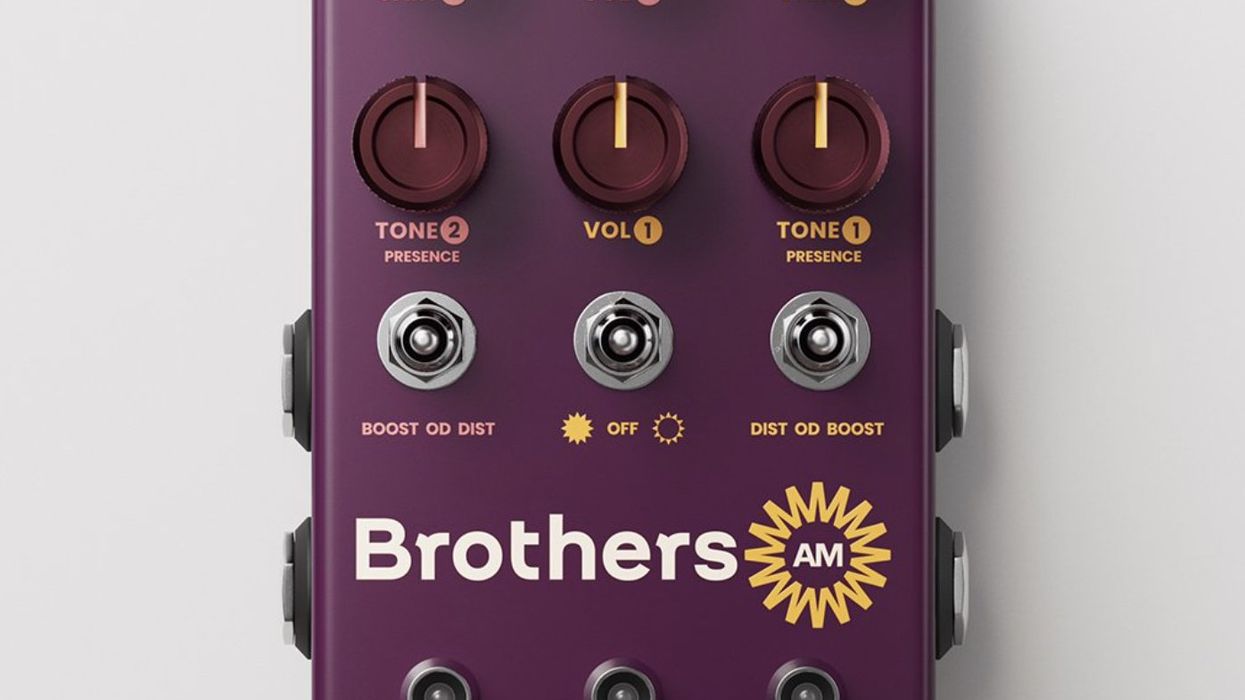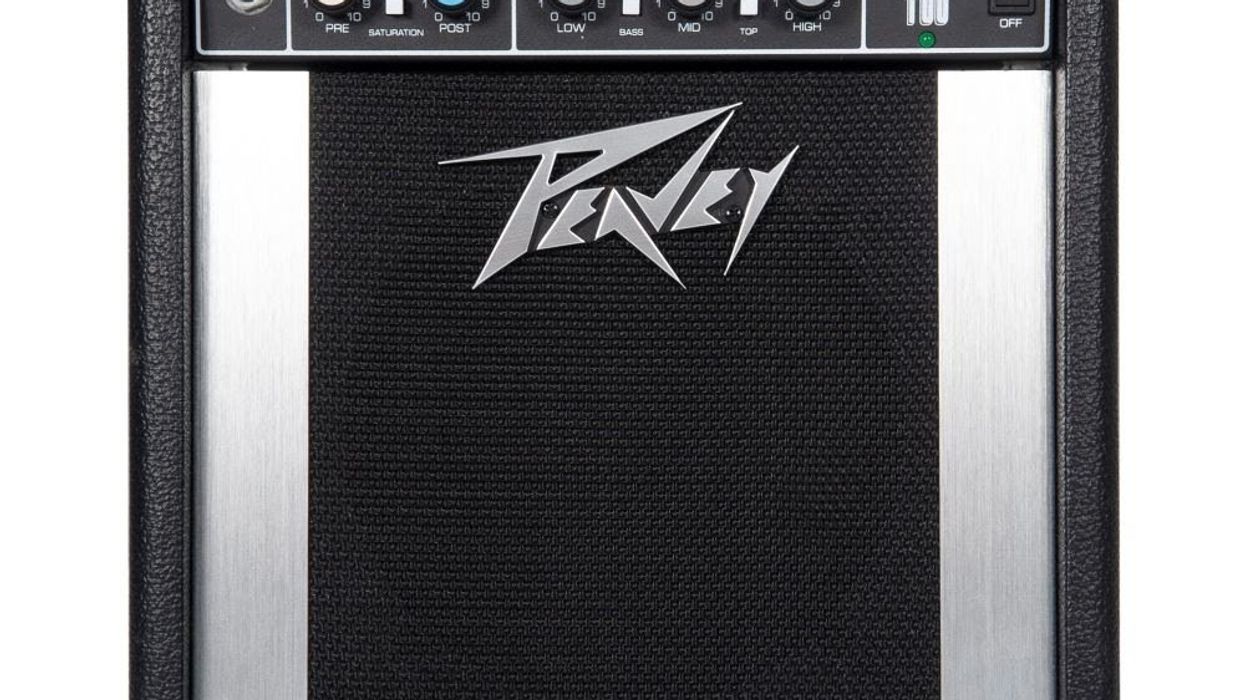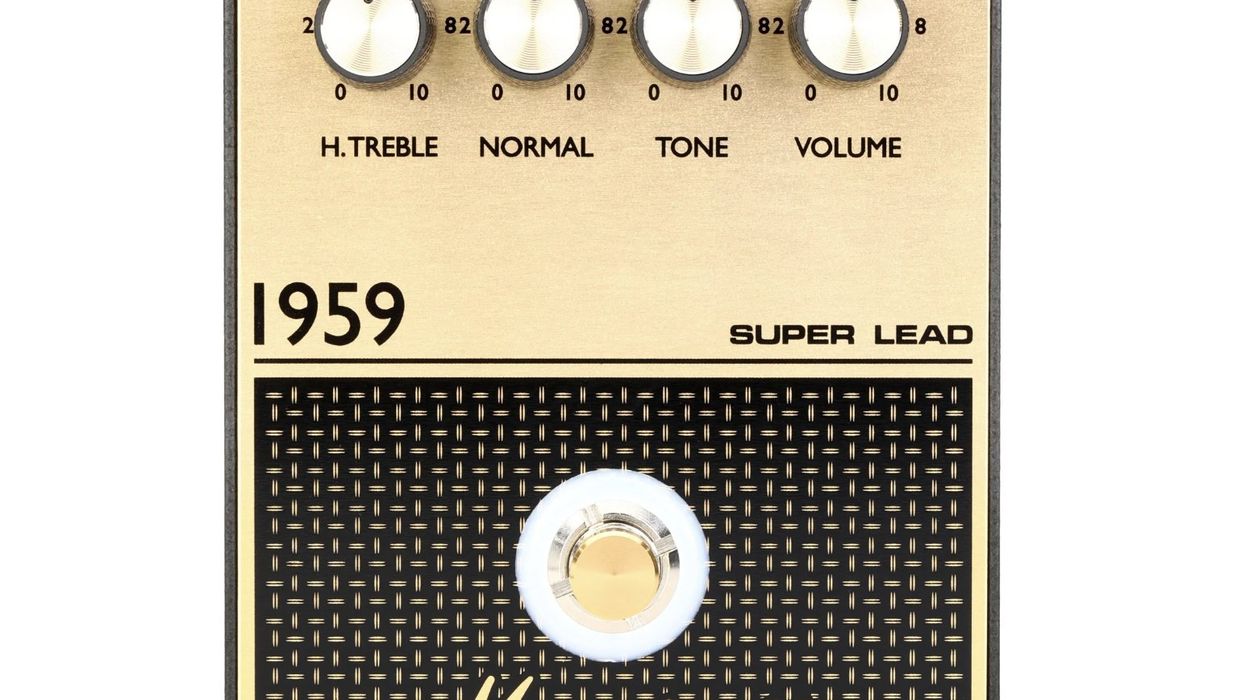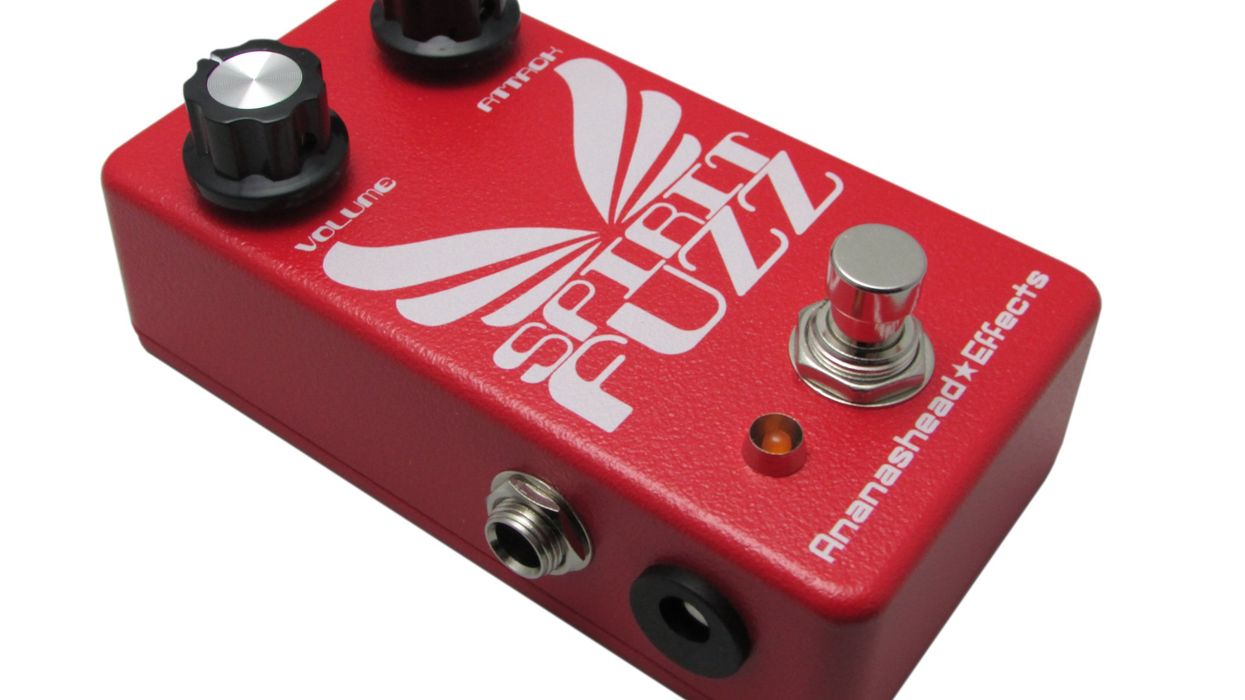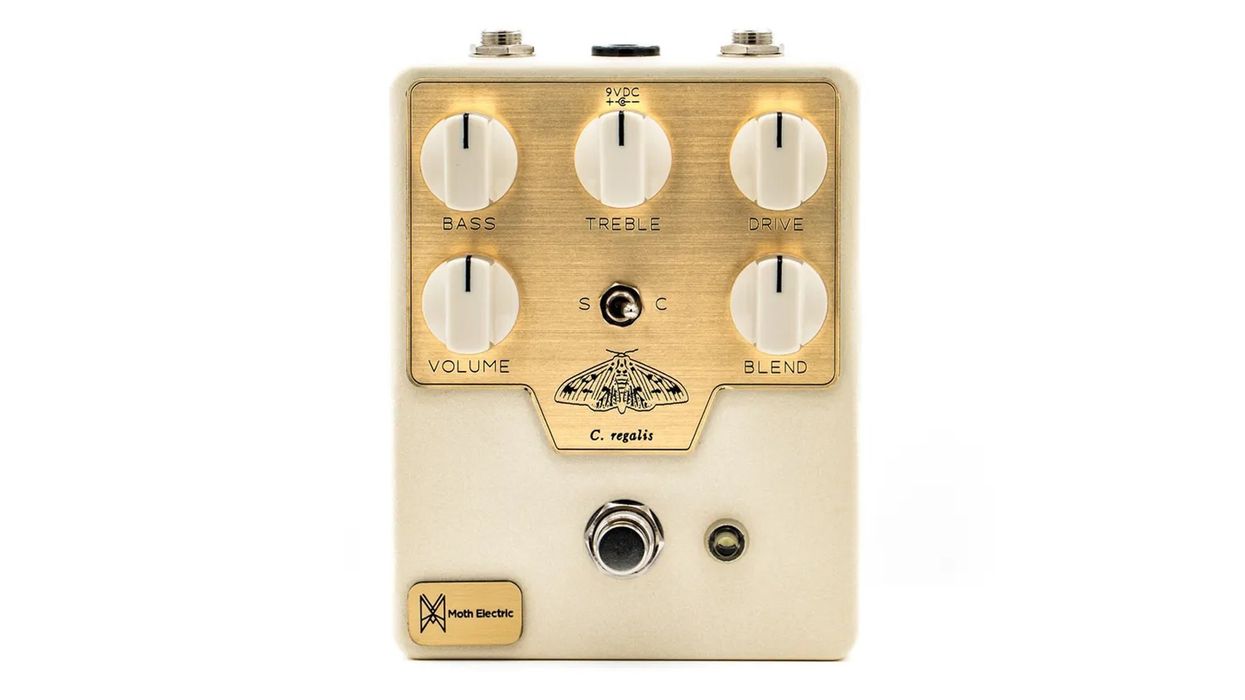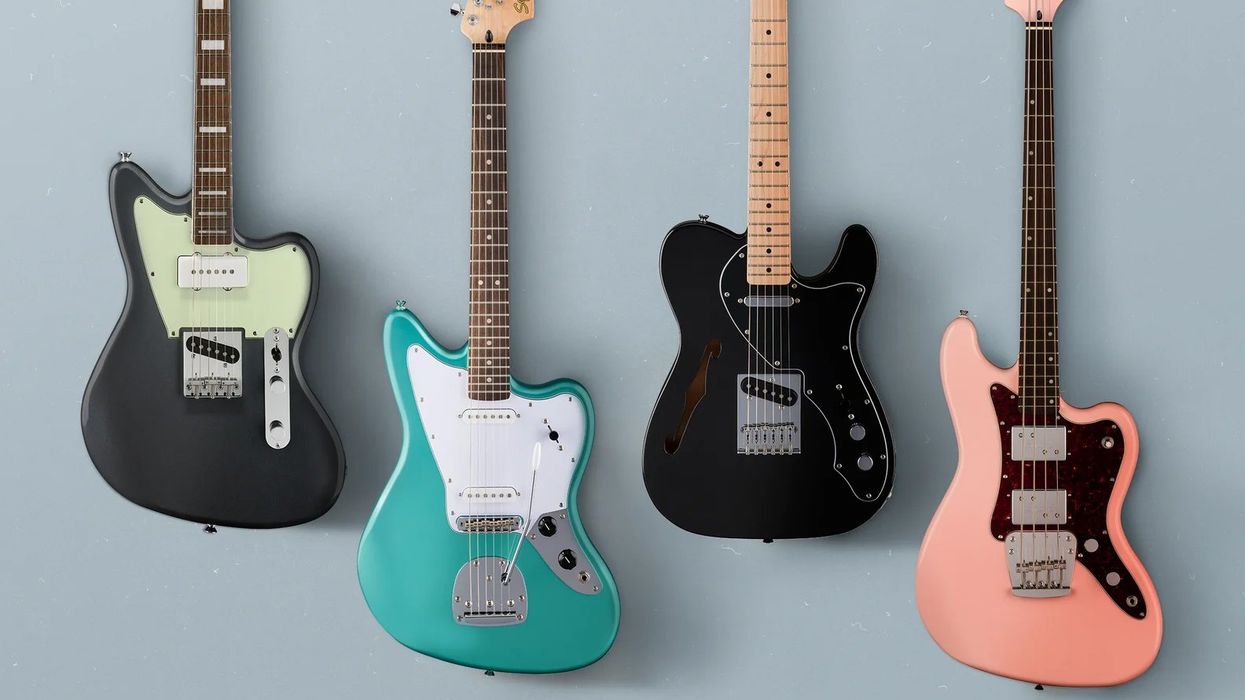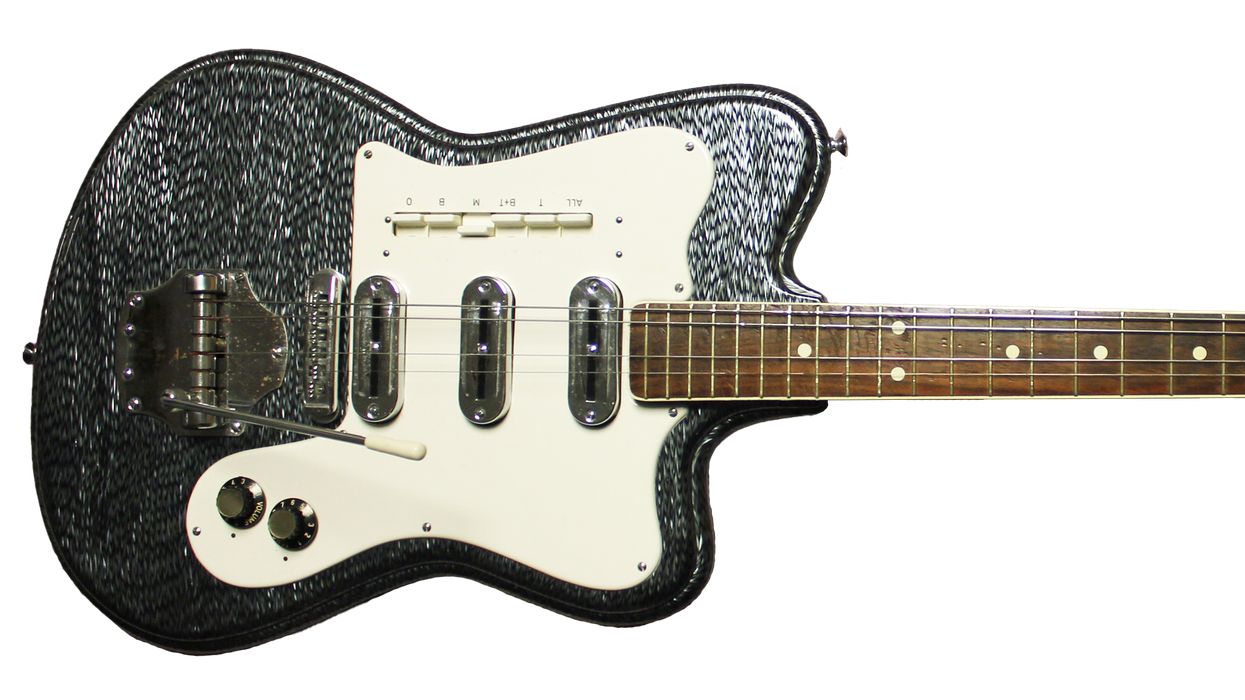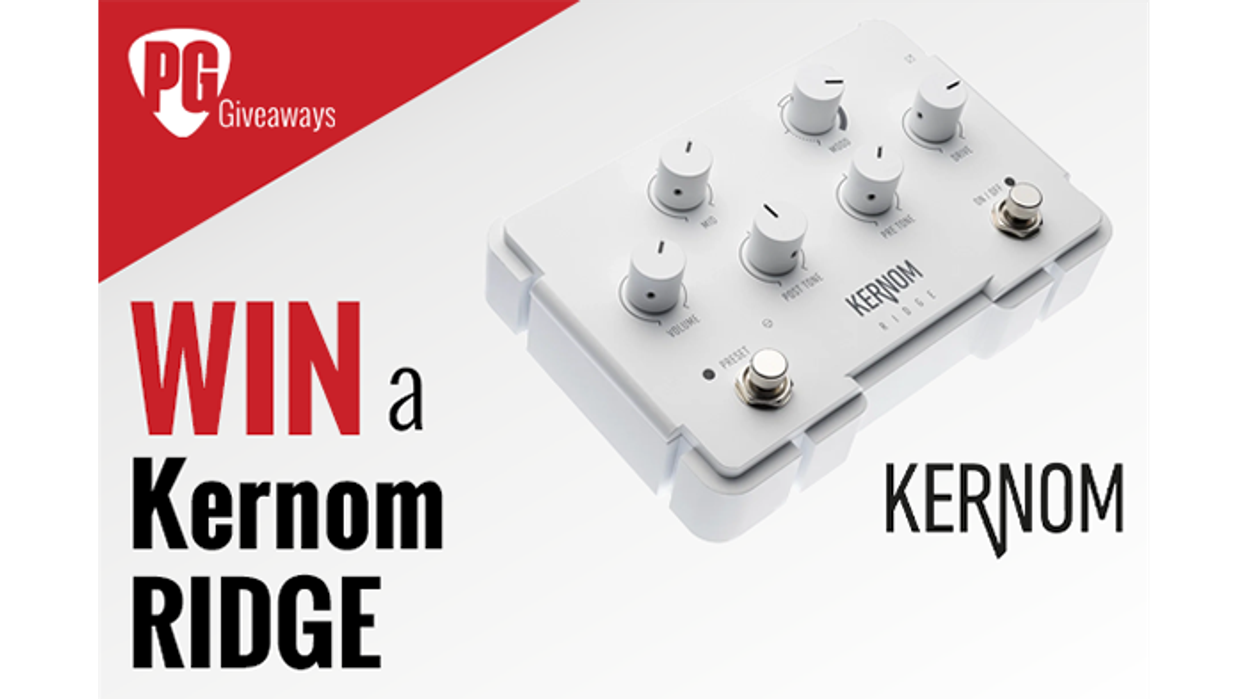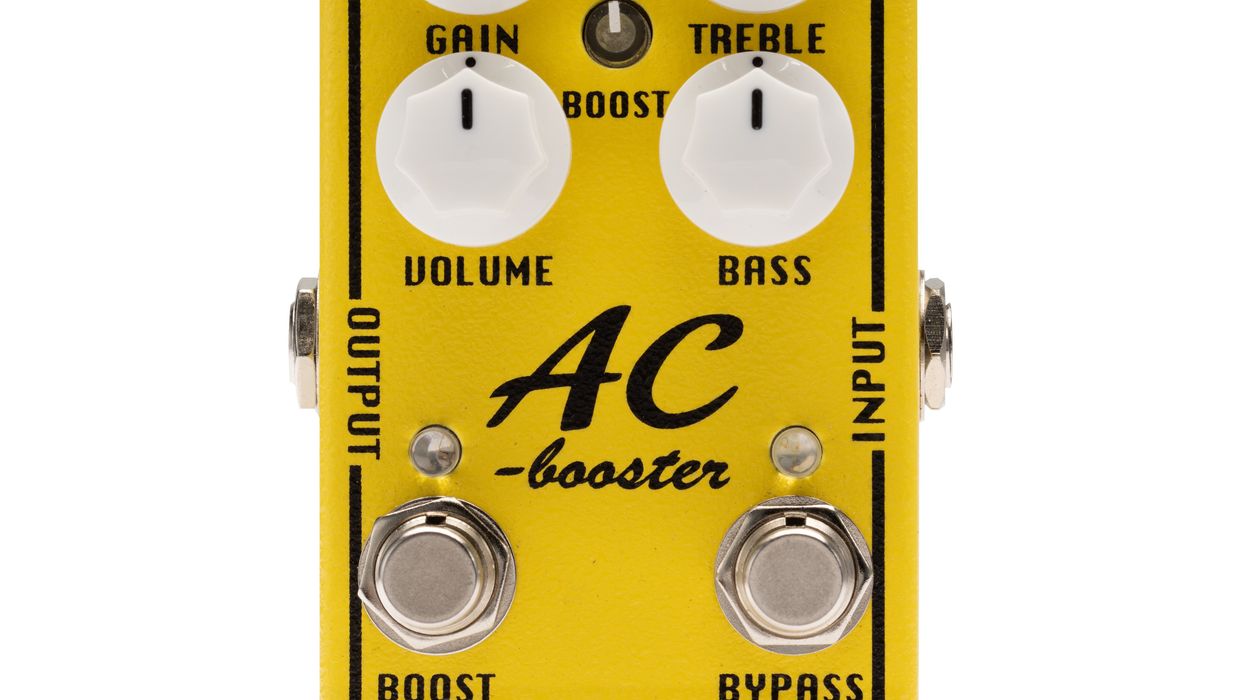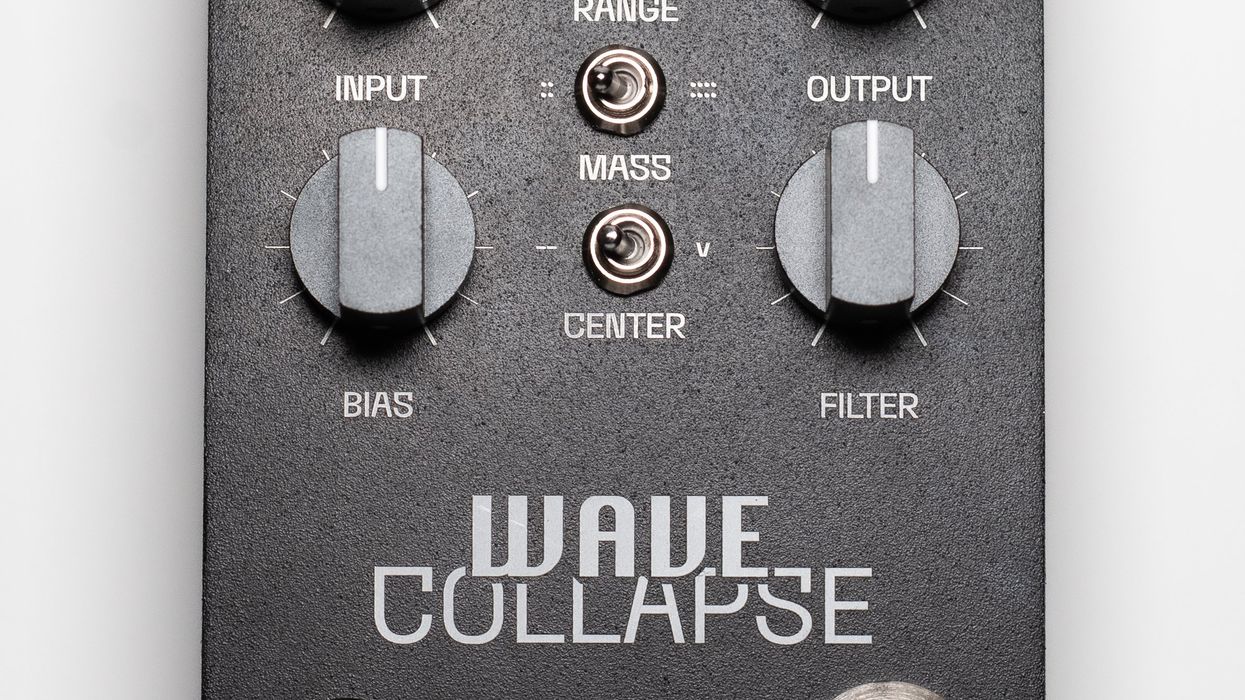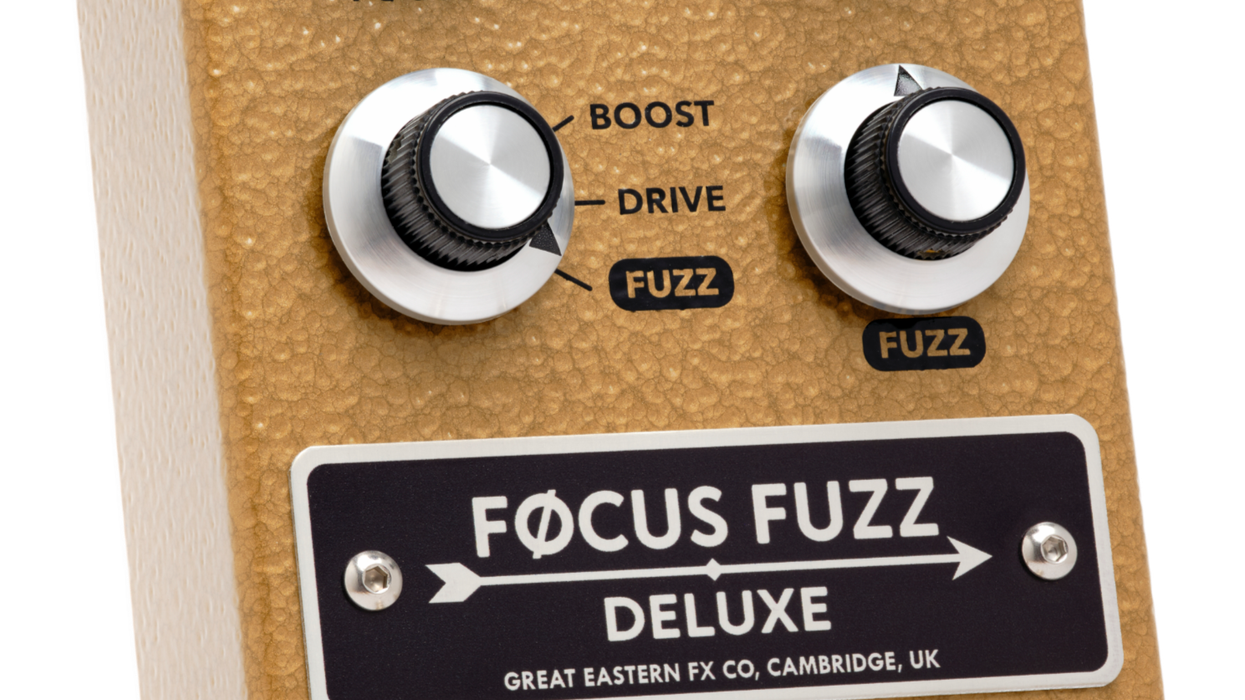As you navigate the controls for the new Source Audio Orbital Modulator—or any of its cousins in the Soundblox 2 family—you’ll notice readouts for “options” and “control.” If you’ve worked with Source Audio’s pedals at all in the past, you know those two words might as well be part of a company mantra. Indeed, the Massachusetts pedal manufacturer can seem more stacked with engineers than MIT, and many of their stomps are designed to deliver something approaching the processing power, functionality, and control of a larger rack device.
The powerful DSP-based Orbital Modulator embodies that approach, packing 12 modulation effects (two of which can be saved as presets and assigned to the two footswitches) and significant shaping power in a compact pedal that’s formidable onstage or in the studio.
Shuttle Craft
With all its knobs, buttons, and blinking
lights, the Orbital doesn’t boast the world’s
most welcoming interface. But it doesn’t take
long to learn how to navigate the unit. The
centermost knob accesses four effect groups—chorus, flanger, resonator, and phaser. Within
each of these modulations you can select variations,
including quad chorus, vibe (based on
the original Uni-Vibe built by Japan’s Shin-Ei
in the 1960s), and multi-stage phasing. The
remaining knobs control parameters such as
depth, speed, and wave shape.
The option control opens up even more fine-tuning potential, enabling adjustment of six parameters (as shown by the LEDs at left) in conjunction with the option knob. Delay/freq adjusts the delay time between the dry and modified signal when using chorus or flanging. When using the phaser, a clockwise turn moves the modulation center point over higher frequencies and gives the effect a brighter tone. Feedback controls the amount of wet signal fed back into the pedal, an essential adjustment that affects overall presence and definition.
The volume parameter provides up to 6 dB of gain, and lo retain isolates low-end output in case you want less effect on your bass frequencies. Increasing tremolo adds another layer of modulation to your base modulation, and you can dial up the presence to generate a more robust chop. Mix adjusts the overall ratio of your dry and wet signal, with a maximum wet signal when cranked clockwise. However, the 12 o’clock position produces a completely dry signal, and once you start going counter-clockwise the frequency becomes inverted—typically pulling out some of the low end, depending on the effect.
Although the fact that the Orbital can only be powered with the included 9V barrel adapter might be a bummer to some players, the two footswitches boast flexibility that should more than make up for it: Both can be switched to either true or buffered bypass. On the downside, their proximity to each other, to the other controls, and to the edge of the housing can make it difficult to engage one without hitting a knob or button, the other footswitch, or an adjacent pedal’s footswitch.
Each switch can also be used as a tap tempo for the speed control. If the left preset is engaged, the right switch becomes the tap switch, and vice versa. There’s also a multifunction in/out that can be used to adjust modulation via MIDI, an expression pedal, or Source Audio’s unique motion-sensing Hot Hand.
Into Orbit
Inserted between a Les Paul and a ’68 silverface
Fender Bassman, the Orbital Modulator
displayed a lot of range—and headroom. I first
dialed in a dual chorus effect for a deep, interwoven
waver that remained impressively complex
without getting oversaturated or mushy. At
these settings, the basic character of the Orbital
Modulator is fairly bright, which obscured
some of the Les Paul’s low-end honk. But I was
able to enhance low-end definition with the lo
retain parameter. Notching up feedback helped
pull out more top-end too, and what I ended up with was a very full-bodied chorus that was
perfect for ’80s Cure-inspired leads.
The Orbital’s “12 stage” setting showcases its more extreme capabilities. It’s the most chaotic of the phaser’s four stages and takes you giant leaps away from the Leslie-like sounds of tamer settings. Single-string runs using a sine wave took on a cosmic character, sending ringing trails chasing after each picked note. Using tap tempo to increase the speed gave the modulated tones a metallic, hollow, and springy feel, perfect for a dub vamp. Rolling off the bridge pickup’s tone knob created a hazy, percussive tone perfect for a slow Funkadelic jam.
Ratings
Pros:
Lots of effects for the money. Compact. True or
buffered bypass option.
Cons:
Switch proximity may cause difficulties on a busy board.
Tones:
Ease of Use:
Build/Design:
Value:
Street:
$169
Company
sourceaudio.net
The phaser control’s lower stages approximate the wobble on classic-rock records, and again tap tempo was indispensable for quickly and precisely changing speed.
With a Stratocaster in the mix, I discovered one of my favorite settings was a vibe option. Making the most of it demanded the use of an expression pedal for adjusting the speed, but it sounded excellent at a fixed rate, too. Keeping the Bassman at the verge of breakup and kicking on the vibe yielded Hendrix-like tones—two-note bends became a dizzying howl, particularly with two pickups engaged.
Adding a Fuzz Face clone yielded more savage Jimi tones, and in this much louder, more hectic setting, the Orbital’s finetuning capabilities were invaluable. The lo retain and feedback parameters helped me fine-tune the output so the fuzz cut through the swirling, complex mix. And despite all its tweakability, the Orbital is very transparent and friendly to the intrinsic voices of your rig elements.
The Verdict
At $169 street, the Orbital Modulator is a
great deal for such a complete, capable, and
option-filled modulation machine—and its
56-bit DSP processing makes many of the
more analog-like effects sound quite genuine.
There are plenty of parameters to discover
new and colorful sonic textures, and
it’s friendly to single-coils and humbuckers.
Perhaps best of all is that all that parameter control means you can really tailor the waveform and EQ characteristics of this pedal to suit the idiosyncrasies of your rig. Given that flexibility, the Orbital Modulator is a great solution if you’re trying to sack a few effects from your chain, save pedalboard space, or are looking for a highly configurable modulation pedal that can move readily from stage to the studio.
Watch our video review:


